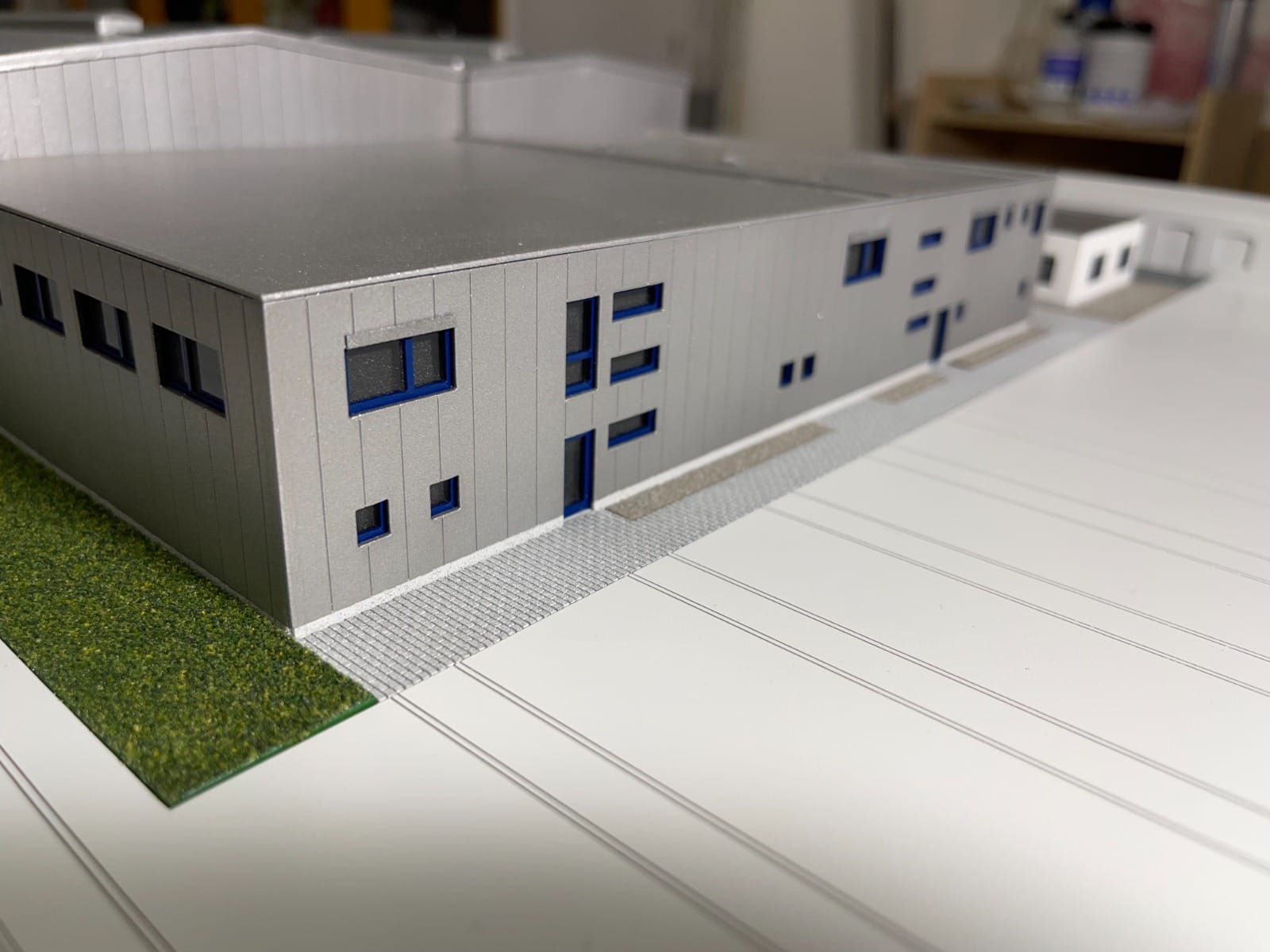Understanding the Role of an Architectural Model Maker Berlin
As urban environments continue to evolve, the significance of visual representations in architecture becomes increasingly paramount. architectural model maker Berlin serve as the linchpin between architects and their clients, showcasing projects in tangible forms that are critical for effective communication and design validation. They transform blueprints and digital designs into physical models that provide essential insights into scale, aesthetics, and context.
1.1 What is Architectural Model Making?
Architectural model making is the art and science of creating tangible three-dimensional representations of buildings, landscapes, and urban designs. These models can range from simple scale representations to intricate, detailed displays that will be used for presentations, exhibitions, or construction planning. Each model effectively serves different purposes—whether it’s marketing a project to clients, testing architectural concepts, or seeking building permits. The process includes meticulously choosing materials, measuring dimensions, and applying finishes to depict the intended vision accurately.
1.2 Importance of Precision in Model Making
Precision in model making is not just desirable; it’s essential. Every detail, from the overall dimensions to the tiniest features, must accurately reflect the architect’s intent. High levels of precision ensure that stakeholders can visualize the spaces and aesthetics of the structure convincingly. Discrepancies can lead to misunderstandings, potentially impacting the project’s success. Therefore, model makers employ various measurement tools and techniques, including CAD software and 3D modeling, to ensure unmatched accuracy and quality.
1.3 Skills Required to Succeed in this Field
To excel in architectural model making, professionals should possess a blend of technical skills and creative abilities:
- Attention to Detail: Every aspect, no matter how minor, contributes to the accuracy of the model.
- Technical Proficiency: Familiarity with design software, hand-tools, and various materials is paramount.
- Creative Vision: The ability to interpret architectural designs and bring visions to life.
- Project Management: Skills to handle projects from inception to completion efficiently.
- Communication Skills: To convey ideas clearly and effectively to clients and collaborators.
2. Services Offered by Architectural Model Makers in Berlin
In Berlin, architectural model makers provide a broad range of services tailored to meet the diverse needs of architects, developers, and designers. This section explores the various services they offer.
2.1 Types of Architectural Models Created
Architectural model makers in Berlin craft several types of models, each serving different functions:
- Presentation Models: Highly detailed models used for client presentations, marketing, and exhibitions.
- Construction Models: Practical models that help in the construction process, illustrating technical details.
- Concept Models: Basic representations to explore design ideas and spatial relationships without intricate detail.
- Urban Models: Large-scale models showcasing broader city planning projects, enabling an understanding of the surroundings.
- Interior Models: Focused on the internal layout and aesthetics, these models help in visualizing interior spaces.
2.2 Customization Options for Diverse Projects
Flexibility is a hallmark of the services provided by architectural model makers in Berlin. Customization options may include:
- Material Choices: From wood to acrylic, the choice of materials can greatly influence the final look and feel of a model.
- Scale Variations: Depending on project needs, models can be crafted in various scales, enhancing their usability for specific contexts.
- Finishing Techniques: Painting, texturing, or adding lights can bring models to life, making them more informative and appealing.
- Interactive Features: Some modern models incorporate technology, allowing stakeholders to engage with the design dynamically.
2.3 Case Studies of Notable Projects in Berlin
Exploring successful case studies can provide insights into the capabilities of architectural model makers in Berlin. One notable example includes the model of the Berlin Hauptbahnhof, which effectively showcased the complexities of the building’s structure and transport hub functionality. Another example is the conceptual model created for the Elbphilharmonie, where details including acoustics and visitor flow were meticulously represented, serving as a crucial tool for stakeholder discussions.
3. Choosing the Right Architectural Model Maker in Berlin
Finding the right architectural model maker is crucial for the success of any project. This decision can influence the project outcome significantly. Therefore, understanding what to look for is essential.
3.1 Factors to Consider When Selecting a Service
When selecting an architectural model maker in Berlin, consider the following factors:
- Portfolio: Review past work to gauge the quality and diversity of models produced.
- Experience: A robust history in the industry often correlates with better service and expertise.
- Client Reviews: Testimonials and feedback from previous clients can provide insight into reliability and customer support.
- Budget: Understand their pricing structure and ensure it aligns with your project budget while not compromising on quality.
- Collaboration Capabilities: A successful relationship requires good communication and collaborative spirit.
3.2 Reviews and Testimonials from Past Clients
Reviews and testimonials are invaluable in assessing a model maker’s reliability and skillset. Sites like Google and industry-specific forums provide platforms where clients share their experiences. Positive reviews often mention professionalism, attention to detail, and the ability to meet deadlines, which are critical factors in a successful partnership.
3.3 Comparing Top Competitors: What Sets Them Apart
Berlin is home to numerous architectural model makers, including blankvers and Contura Modellbau. While they all serve similar markets, key differentiators may include:
- Specialization: Some companies may focus on specific types of models, such as sustainable designs or interactive installations.
- Innovation: Leading competitors are adopting new technologies, such as 3D printing and VR, enhancing their offerings.
- Customer Service: Companies known for excellent client communication and post-project support stand out in such a competitive marketplace.
4. The Future of Architectural Model Making in Berlin
The architectural model making industry is evolving rapidly, influenced by technology, sustainability, and changing client needs. Understanding these trends is vital for industry professionals hoping to stay ahead in Berlin.
4.1 Emerging Technologies in Model Making
3D printing technology has revolutionized architectural model making. This innovation allows for more intricate designs to be produced quickly and cost-effectively, facilitating rapid prototyping and iterating on designs before final approval. Digital modeling and simulation technologies are also becoming commonplace, enabling enhanced visualizations and client interactions with designs before construction begins.
4.2 Trends Driving the Industry Forward
Several trends are shaping the future of the architectural model making industry:
- Sustainability: There is a growing demand for eco-friendly materials and sustainable practices in model making, reflecting a broader trend within architecture.
- Increased Collaboration: Architects are increasingly collaborating with model makers early in the design process, enhancing the final product.
- Technology Integration: Interactive and augmented reality features in models are becoming more prevalent, providing immersive presentations for clients and stakeholders.
4.3 The Role of Sustainability in Architectural Models
As awareness around climate change grows, sustainability is becoming crucial in architectural practices, including model making. Model makers are transitioning to recyclable materials, eco-friendly paints, and energy-efficient processes. By adopting sustainability, model makers enhance their appeal and align with clients who prioritize environmentally responsible designs.
5. How to Get Started with Architectural Model Making
For those interested in pursuing a career in architectural model making, understanding the pathways into the profession and tools required is essential. This section outlines how aspiring model makers can begin their journey.
5.1 Educational Pathways and Training Programs
Becoming an architectural model maker typically involves formal education in design or architecture. Courses in model making, sculpture, and visual arts can provide foundational skills. Many institutions, including the University of the Arts Berlin (UdK), offer specialized programs. Additionally, internships with established firms can offer hands-on experience, enhancing knowledge and skillsets.
5.2 Essential Tools and Materials for Beginners
Beginners will require a foundational toolkit, which may include:
- Cutting Tools: Precision blades and scissors for shaping materials.
- Measuring Instruments: Rulers, calipers, and other measuring devices for accuracy.
- Adhesives: Glue guns, epoxy, or specialized modeling adhesives.
- Modeling Materials: Wood, foam, acrylic, and cardboard are commonly used materials.
5.3 Building a Portfolio for Aspiring Model Makers
A strong portfolio is essential for aspiring architectural model makers. It should showcase a range of styles and techniques, emphasizing the model maker’s versatility and creativity. Projects can be relationships formed during education, internships, or even personal initiatives. Documentation and reflection on challenges faced, along with solutions, can enhance the portfolio’s professionalism, making it more appealing to potential employers or clients.



